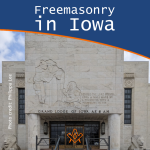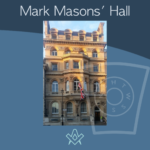After more than two years of intermittent solitary confinement, I was able to do what I love best (aside from being an Editor of course) – and travel.
A series of fortunate events steered me in the unexpected direction of Iowa, mid-west United States.
Aside from the, now normal, accoutrements of mask and copious hand sanitiser, all seemed familiar and exciting at the airport.
Due to having been diagnosed a few years ago with a rare neurological disease, which affects my mobility amongst many other things, I now take advantage of the ‘passenger assistance’ offered by all airlines (some airlines have wildly varying attitudes to ‘assistance’ but that’s another story!)
Travelling solo is an experience in itself, and one that I normally enjoy, so having assistance was both a blessing and a curse – the upside is being whisked past every queue full of scowling passengers, clearing security in record time and being first on the plane; the downside is that you get ‘parked’ in a lounge too far from Duty Free that resembles a nursing home, with rows of curmudgeonly folk staring at a TV screen.
However, this did nothing to curb my ‘kid at Christmas’ excitement and I was soon on my British Airways flight to Chicago and treated like an Economy goddess.
From the Windy City, I flew to Cedar Rapids, six hours behind my already very overdue bedtime.
It seems that wherever I go in the world there’s a Masonic connection…and in the true spirit of the Fraternity, the warmest of welcomes always awaits me.
As I always do, I’d researched my destination in advance, and was pleased to see that my vague knowledge of Freemasonry in Iowa could be expanded.
Cedar Rapids, the second-largest city in Iowa, located 20 miles north of Iowa City and 100 miles northeast of the state’s capital Des Moines, was the home of some interesting historical Masonic figures, including Joseph Fort Newton, author of ‘The Builders’, and now hosts the Grand Lodge of Iowa Masonic Library and Museum, and the Scottish Rite Temple.
The city straddles the Cedar River, with a population of just under 140,000. Known as the ‘City of Five Seasons‘ – the symbolic ‘fifth season’ being the time to enjoy the other seasons, and life itself.
Cedar Rapids is a city of culture and has a strong multicultural identity found in its Czech heritage; museums and art galleries abound, fantastic eateries and bars are round every corner, including my new favourite quarters, Newbo and the Czech Village, both deliciously and quite literally Bohemian.
The morning after my arrival, my friend spirited me away for kolache and coffee at the Sykora Bakery in the heart of the Czech Village. From there we drove to Bellevue, Jackson County, on the banks of the frozen Upper Mississippi River (Lock and Dam No. 12) to see the migrating Bald Eagles. Exiting the Tourist Centre I just happened to look at the building to the left – Bellevue Lodge #51

After a hearty lunch overlooking the Mississippi, we continued our journey to Galena, Illinois. Another town steeped in heritage, arts and culture, and superb eateries, it was whilst searching for a parking space that I saw…Miner’s Lodge #273 A.F. & A.M.

Photo: Philippa Lee
The name is historically appropriate as Galena (latin: lead) had been mined for use in burial rituals for more than a thousand years by the Native Americans (the Mesquakie, Ho-Chunk, Sauk, and Menominee) prior to the settlement of European Americans.
By the mid-1600s French explorers noticed lead deposits in the Upper Mississippi Valley and by the 1690s, the first mineral ‘rush’ began, creating conflict with the Sioux.
The city was only named ‘Galena’ around 1826; needless to say, greed overcame the settlers and eventual ‘war’ ensued as they encroached on the territory of the native land.
By the 21st century the decline in demand for lead has seen the population drop sharply from 14,000 in the mid-19th century to less than 3,500.
So, the lodge name is a legacy to those centuries of mining, by both the Native and European Americans. However, the ‘first’ lodge in Galena was Strangers’ Union Lodge No. 14:
“Strangers’ Union” was organized before the arrival of the U. S. Agent, Capt. Martin Thomas, who came to take charge of the mineral lands on behalf of the Government and to lay out the “village” of Galena, two years before the publication of the first newspaper in this the Northwest.
If the Masonic record be incomplete, the brethren will bear in mind that it is owing to three reasons:
First, there are no records preserved of the early meetings of Strangers’ Union Lodge No. 14.
Second, we have no knowledge that any member of the old Lodge is living at the present day.
Third, there was no newspaper published in the lead region at that time to whose files we may refer for a record of the event.
– from History of freemasonry in the city of Galena, Illinois, 1874.
Iowa Masonic Library and Museums – a gem hidden in plain sight

Front entrance to the Grand Lodge of Iowa Masonic Library and Museum.
Photo: Philippa Lee
The large white marble structure houses a four floor library, several museums, special exhibits, the administrative offices of the Grand Lodge of Iowa A.F. & A.M. the Linn County Genealogy Society and the Masonic Service Association of North America. [Text copyright: 2019, Grand Lodge of Iowa, A.F & A.M.]
But it was back in Cedar Rapids that the real gem caught my eye – Iowa Masonic Library and Museums. I had emailed the Librarian Bill Kreuger before heading to the States and mentioned my intention to visit.
A quick Google on the day showed that it was open, so I headed over only to find a notice on the door instructing me to book a scheduled tour due to Covid restrictions. I was a tad disappointed, but braved the icy paths to take some photos of the magnificent exterior.
I decided to call and book a tour for the following day but on being put through to ‘the Librarian’, I mentioned I was in the parking lot – immediately Bill invited me to ‘come on in!’, which of course I did without hesitation.

Philippa with Bill Kreuger, the Assistant Librarian and Museums Curator, in the Hall of Freemasonry, where there is an exhibit of a Masonic lodge room, which is occasionally used for Masonic ceremonies and other events. When the blinds are drawn back, the room is flooded with a kaleidoscope of light from the stunning stained glass windows.
Photo: Philippa Lee
Bill greeted me with a huge welcoming smile; we were both a bit in awe of each other – he being a hugely knowledgeable curator of a world-renowned Grand Lodge Library and Museum and me being, well, a humble niche author and editor of a Masonic magazine.
Invariably it seems that wherever I go in the world there’s a Masonic connection…and in the true spirit of the Fraternity, the warmest of welcomes always awaits me.
It is always a pleasure to connect with Brethren across the globe and far more so when I get to meet them in person. I can’t thank Bill and his colleagues enough for kindly accommodating me on both days – I even got coffee and a slice of pie!
Considering my sudden appearance, Bill gave me a fantastic whistle-stop tour of the Library, which holds the oldest and most special collection in Iowa.
It is every Masonic historian, researcher or enthusiast’s idea of heaven – row upon row of almost every ritual book, constitutions and monitors from around the world and a collection of rare Masonic books that most of us have only seen references to.
The Iowa Masonic Library was formed in 1845 by Theodore S. Parvin, and ‘that year the Trustees of the Grand Lodge of Iowa voted to allocate $5 to the foundation of a Masonic Library’.
Parvin served as the Grand Secretary and librarian for over 50 years, during which the collection of rare Masonic books amassed is considered to be one of the finest in the world.
The collection built so rapidly that it soon outgrew the original building even after the addition of two extensions. In 1952, the old building was razed and the splendid marble structure we see today, was erected.

IMAGE LINKED: Copyright: 2019, Grand Lodge of Iowa, A.F & A.M.

left:’The Spirit of Masonry’ wall.
One of the two majestic marble lions that guard the entrance to the Grand Lodge of Iowa Masonic Library and Museum.
Photos: Philippa Lee
The Library had something of a nomadic existence for nearly forty years, moving from Muscatine to Iowa City, to Davenport, back to Iowa City and finally to Cedar Rapids in 1884, when the first Masonic Library Building in the world was opened to the public; it’s life expectancy was 100 years.
Nearly 140 years later, the Library is spread over four floors and boasts one of the world’s most complete collections of Masonic and general interest books with a staggering 250,000+ volumes.
It has both a lending library, and a closed section for research purposes only – there is no required Masonic affiliation to access the Library and those titles available for lending may be borrowed freely.
Aside from the specifically Masonic titles, the Library holds over 7,500 books in its Iowa Collection, dealing with the history, social history, government and education relating to the state of Iowa.
In addition, specialist collections that relate to religion, philosophy, literature, biography and the esoteric are in abundance: The Robert Burns Poetry Collection, the Abraham Lincoln Collection, the Arthur Edward Waite Collection of esoteric and occult science, the Joseph A. Walkes* Collection of Prince Hall Masonry, the Harvey Collection of Landscape Architecture, the Shakespeare Club, and the Allers Gettysburg Collection. [*Joseph Walkes was a Historian and founder of the Phylaxis Society]
Time ran out but Bill invited me to return the next day for a tour of the Museums…and the rare book section!

IMAGE LINKED: Copyright: 2019, Grand Lodge of Iowa, A.F & A.M.
The Library’s rare book vault, of which I was privy to the following day holds a 1723 copy of the Constitutions of the Free-Masons, something I had only seen previously in the collection of the Library and Museum of Freemasonry in London.
Bill laid it gently before me, it bears a fairly unprepossessing binding until you open the cover and see the beautiful frontispiece engraving; then I was shown a first edition of Ahiman Rhezon, followed by an account book owned by Joseph Smith (the founder of Mormonism)…and there was so much more.
In the store rooms, oversize books of all subjects are to be found, a large section of which were given to the Library during the late 19th/early 20th centuries by the Egypt Exploration Fund (EEF) of which the Grand Lodge of Iowa Museum were sponsors.
The building is home not only to these invaluable collections, but also two Museums holding both Masonic and non-Masonic artefacts and which is open to all visitors; I was delighted when Bill treated me to a full private tour.
The Masonic Museum includes Masonic art, regalia, jewels and equipment from around the world; furniture made by local Mason Philip J. Sargent, and pictures of the 14 American Presidents who were Freemasons.
The collection of Masonic artefacts are diverse and all displayed beautifully in well-lit and spaced cases, with some very rare collections belonging to famous Masons, including A. E. Waite (see above).
The non-Masonic museum section is equally as engaging and houses an eclectic array of artefacts that range from a collection of antique shoes (including some eyewatering Chinese ‘bound feet’ styles), American military items (the Civil War guns were fascinating), Babylonian tablets, Native American pipes, and most excitingly for me, a small but very beautiful collection of ancient Egyptian pottery, shabtis, and votives.
The Egyptian collection, along with the books mentioned previously, were given to the Museum and Grand Lodge of Iowa in recognition of their sponsorship of the Egypt Exploration Society.
However, for me, the most unexpected and beautiful item in the museum has to be the three-panelled painting by the artist Grant Wood. Wood is probably best known outside the United States for his iconic painting ‘American Gothic‘ – an image used, and imitated, innumerable times in popular culture.
The painting, entitled ‘The Three Degrees of Freemasonry’, was the only Masonic painting Wood did, although he was a Mason and member of Mt. Hermon Lodge No. 263.
Only a few days earlier I had passed through Wood’s birthplace of Anamosa, and visited Stone City, the site of his art collective and the area that inspired one of his most beautiful landscape paintings.
Yet, my knowledge of Grant Wood prior to this trip was ‘American Gothic’, and even then I had not linked the name to the painting.
After Bill told me more about the man, his art and his Freemasonry, I now have a huge appreciation for the artist [we will feature more on Grant Wood in a future issue].
I cannot recommend the Library and Museums more highly. If you live in – or are visiting – the United States, especially Iowa, get yourself to Cedar Rapids and check out this absolute gem of an institution, and if Bill is there, you will be met with the very best welcome that Freemasonry can offer!

A leaflet from the GLoI featuring a list of ‘Books Especially for the New Mason’
IMAGE LINKED: Copyright: 2019, Grand Lodge of Iowa, A.F & A.M.
We will be featuring far more on Grant Wood, Iowan Freemasonry, and of course, the Iowa Masonic Library’s extensive collections and more unusual artefacts in the Museums, in future issues of The Square.
For more information:
Iowa Masonic Library and Museum
Grand Lodge of Iowa, A.F. & A.M.
813 1st Avenue SE
Cedar Rapids
Iowa 52402-5001
Phone: +1 319-365-1438
Email: librarian@gl-iowa.org
Opening times are currently subject to any remaining Covid-19 restrictions – call first for opening hours or to book a scheduled tour. Tours are free; groups of 10 or more should book first.
The building is mostly accessible throughout for those with moderate mobility, although do check with the team for suitability regarding wheelchair users.
The author would like to extend her thanks to Bill Kreuger for his valuable knowledge and kindness, and also to the Grand Lodge of Iowa for the use of text/images from their leaflets.
Article by: Philippa Lee. Editor

Philippa Lee (writes as Philippa Faulks) is the author of eight books, an editor and researcher.
Philippa was initiated into the Honourable Fraternity of Ancient Freemasons (HFAF) in 2014.
Her specialism is ancient Egypt, Freemasonry, comparative religions and social history. She has several books in progress on the subject of ancient and modern Egypt. Selection of Books Online at Amazon
Recent Articles: in this series
 Editor Philippa Lee discovers Freemasonry in Iowa and takes a tour around the hidden mysteries of the Iowa Masonic Library & Museums |
 Both Freemasons' Hall and Mark Masons' Hall are open to the public during the open house London event taking place in September 2021 |
 A look at the fascination with Egyptomania and Masonic Temples in Australia |
 Queensland's Masonic Memorial Centre In honour of ANZAC Day on 25 April - we look at one of the two specifically dedicated Masonic Memorials in the world, and how Freemasons in Australia and New Zealand continue to honour those who have made the ultimate sacrifice. |
 Open House at Mark Masons' Hall, London Virtual Open House Tour of Mark Masons' Hall, London |
 What's on at The Library and Museum of Freemasonry in London |
 A sneak look inside Freimaurermuseum in Germany |
 Virtual video tour of the Museum with a very compelling introduction into Freemasonry |
masonic knowledge
to be a better citizen of the world
share the square with two brothers

click image to open email app on mobile device









